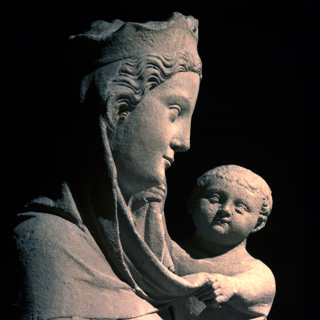
Veiling the Mystery: Passiontide: Why the Church Covers the Cross Before Easter
Veiling the Mystery: Passiontide: Why the Church Covers the Cross Before Easter This Homily explains the Catholic tradition of covering statues and crucifixes . . . . . . during the final part of Lent, known as Passiontide. The veiling symbolizes the Church’s recognition that we do not yet fully understand the mystery of Christ’s cross and passion. The action of covering — and later unveiling — represents a spiritual journey from blindness to sight, ignorance to understanding, and distance to intimacy with Jesus. Hear more within the media. The Church emphasizes that while humans often think they know and understand Jesus, true knowledge of Him requires humility and openness. The passion readings reveal this struggle, with examples like Jeremiah’s persecutors, the divided crowd confronting Jesus, and Nicodemus — a figure caught between belief and doubt. Ultimately, the cross acts like a key: only through its mystery can we unlock a fuller understanding of Jesus, His mission, and our faith. Listen to this Meditation Media. Listen to: ------------------------------------------ Image: Veiling the Mystery: Passiontide: Why the Church Covers the Cross Before Easter Notice the purple coverings of the Cross and other icons on the altar. ------------------------------------------ Gospel Reading John 7: 40-53 First Reading Jeremiah 11: 18-20
8 Apr 23min
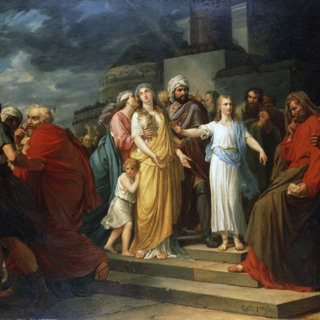
Gardens of Trial: From Eden to Daniel’s Vindication of Susanna
Gardens of Trial: From Eden to Daniel’s Vindication of Susanna The Homily explores the theme of testimony and witness in Scripture, . . . . . . particularly focusing on the story of Susanna from the Book of Daniel and its parallels to other biblical narratives. The homily highlights that to “testify” means to bear witness, often in challenging situations. It draws comparisons between Susanna’s trial in the garden and the story of Adam and Eve, illustrating how gardens in Scripture symbolize both innocence and testing. The Homily also explains how this impacts our own Spiritual Journey. Susanna faces the corrupt testimony of two elders, paralleling Satan’s deceit in Eden. Despite being threatened, she chooses faithfulness over survival, trusting in God’s justice rather than succumbing to sin. Daniel’s intervention represents the arrival of new wisdom and God’s vindication of the righteous. The reflection challenges believers to resist compromise, remain faithful even in exile (spiritual or physical), and to discern truth beyond appearances. Listen to this Meditation Media. Listen to: Gardens of Trial: From Eden to Daniel’s Vindication of Susanna ------------------------------------------------- image: Daniel Saving Susanna: French Artist and Painter: François Pascal Simon Gérard: 1770-1837 ------------------------------------------------- Gospel Reading John 8: 12-20 First Reading Daniel 13: 1-9, 15-17, 19-30, 33-62
8 Apr 25min
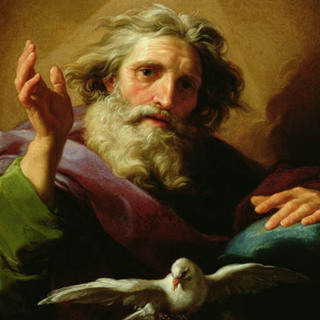
When Human Love Falls Short, God’s Love Remains
When Human Love Falls Short, God’s Love Remains To better understand the first reading, it’s important to grasp its context: . . . . . . the people of Israel are in exile, living under Babylonian oppression. Years have gone by, and their suffering shows no sign of ending. Their dream of returning to Jerusalem feels more distant than ever. In their discouragement, they begin to grumble: “We have sinned. God has abandoned us. We are stuck here in exile forever, without hope.” But into this despair, God speaks through the prophet with a powerful message of comfort and hope: “I have not forgotten you. I will not abandon you. I will come to save you.” The Prophet Speaks of God Using the Image of a Mother Remarkably, the prophet speaks of God using the image of a mother. Think about it — if we were asked, “Who loves you the most?” many of us would probably say, “My mother.” A mother’s love is often the first and deepest love we experience. But God goes even further. God says: “If you think a mother’s love is strong, multiply that love a thousand times… then multiply it again a thousand times more. Even if human love fails — even if a mother were to forget her child — my love for you will never fail. I will always come back for you. I will always save you.” This is the same message we encounter in today’s Gospel. Jesus says: “My Father is always at work, and I too am working.” And what is the work of the Father? It is to give life. Jesus continues that work — offering life, healing, and salvation. Jesus tells us how we can receive this life: first, by listening to His word; and second, by believing in the One who sent Him. This is the path to eternal life. Even in death, those who have heard His word and believed will live. This is the invitation given to us in this Lenten season — to listen deeply to God’s word and to believe in His love. Because God is love. And our prayer is that we, too, may be filled with that same love — a love that never fails, never forgets, and always saves. Listen to this Meditation Media. Listen to: When Human Love Falls Short, God’s Love Remains ---------------------------------- Image: God the Father and the Holy Spirit : Italian Artist: Pompeo Batoni: (l. 1708-1787) ---------------------------------- Gospel Reading: John 5: 17-30 First Reading: Isaiah 49: 8-15
6 Apr 10min

Mary at the Foot of The Cross: Lenten Conference #5
Mary at the Foot of The Cross: Lenten Conference #5 The conference reflects on Mary at the Foot of The Cross, encouraging believers to deepen their relationship with God as Easter approaches. The listeners are invited to examine their spiritual progress and open their hearts to God’s love, mercy, and presence. The meditation draws parallels between three biblical moments involving Mary: -1- The Wedding at Cana – where Mary initiates Jesus’ public ministry by asking him to perform his first miracle. -2- Calvary (The Cross) – where Mary stands by Jesus during his crucifixion, showing total obedience and love. -3- The Garden of Eden – where sin entered the world through the disobedience of Adam and Eve, which is reversed by the obedience of Jesus (the new Adam) and Mary (the new Eve) on the Cross. Mary’s presence at both Cana and Calvary highlights her symbolic and spiritual role. At Cana, she helps bring joy through wine; at Calvary, she participates in the ultimate sacrifice as Jesus gives himself—and his mother—to humanity. Mary and the Eucharist The meditation also explores the deep connection between Mary and the Eucharist. As the mother of Jesus, Mary is called the “Woman of the Eucharist” by St. John Paul II. Just as she bore Jesus physically, she invites us to receive him spiritually in the Eucharist. Her fiat (“let it be done”) is echoed when we say “Amen” during Communion, accepting Jesus into our lives. The reflection ends with a poetic hymn about Mary’s Sorrow at the Cross, inviting believers to share in her suffering and love, and to live lives of deeper faith and union with Christ. Listen to this Lenten Season Friday Devotional Conference: Listen to … Mary at the Foot of The Cross: Lenten Conference #5 ------------------------------------------------- image: Christ of St. John of The Cross: Spanish Painter: Salvador Dalí: 1951 The painting is known as the Christ of Saint John of the Cross, because its design is based on a drawing by the 16th-century Spanish friar John of the Cross. Note: This is a low-resolution picture for copyright purposes. ------------------------------------------------- Note: This marks the Fifth Friday of the current Lenten Season, featuring special formation conferences covering a range of seasonal topics. Select the Friday Lenten Season Link below to see all conferences captured to date.
4 Apr 20min
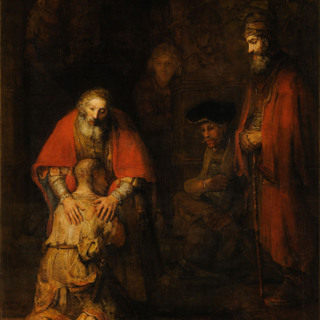
From Weakness to Grace: The Gift of Repentance and Drawing Closer to God
From Weakness to Grace: The Gift of Repentance and Drawing Closer to God The readings emphasize the beauty of repentance . . . . . . and the opportunity to grow closer to God, especially during the Lenten season. It highlights how prayer, charity, and self-reflection help bridge the gap between humanity and God. The closer we draw to God, the more we recognize our weaknesses and our need for His grace. The Parable of the Prodigal Son The Gospel Reading reflects on God’s patience, contrasting it with human impatience. It uses biblical narratives, such as the Israelites’ journey to the Promised Land and the parable of the prodigal son, to illustrate God’s mercy and unwavering love. Jesus, like Joshua, leads believers to a greater Promised Land—God’s kingdom. Despite human failings, God eagerly awaits our return, offering grace and reconciliation. The Homily urges believers not to take God’s patience for granted but to respond to His mercy by seeking Him earnestly. Listen to this Meditation Media. Listen to: From Weakness to Grace: The Gift of Repentance and Drawing Closer to God ------------------------------------ Image: The Return of the Prodigal Son: Dutch Artist and Painter: Rembrandt: 1661
31 Mar 18min
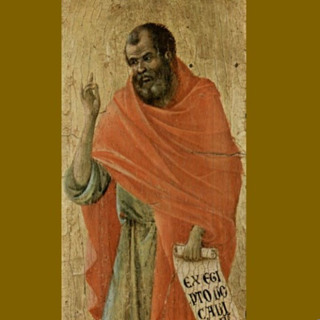
God’s Enduring Love: A Lesson from the Prophet Hosea During This Lenten Season
God’s Enduring Love: A Lesson from the Prophet Hosea During This Lenten Season The Book of Hosea, one of the Minor Prophets, . . . . . . delivers a profound message about the relationship between God and Israel, depicted as a husband and wife. Though Israel turned away from God to worship idols, God remained faithful and sought reconciliation. This message is relevant to all believers, especially during Lent, prompting self-reflection on modern-day “idols” such as wealth, status, and personal image. Jesus affirms that God alone should be worshipped, and once He is placed at the center of life, everything else—including relationships—falls into place. True love for God leads to genuine love for others, making faith the foundation of strong relationships and spiritual fulfillment. Listen more to this Meditation Media. Listen to: God’s Enduring Love: A Lesson from the Prophet Hosea During This Lenten Season -------------------------------------------- Image: The Prophet Hosea: Italian Painter: Duccio di Buoninsegna: 1309–1311 -------------------------------------------- Gospel Reading Mark 12: 28-34 First Reading Hosea 14: 2-10
30 Mar 9min
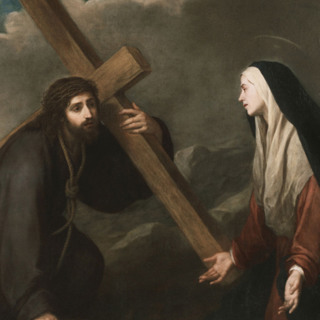
Persevering Through Lent: Rising After We Fall
Persevering Through Lent: Rising After We Fall At the beginning of Lent, many approach the season with enthusiasm, setting spiritual goals and making promises. However, as time passes, some may struggle or fall short of their commitments. The Church encourages perseverance, reminding believers that even if they falter, they should rise and continue their journey in faith. Lent is a Time of Spiritual Renewal Lent is a time of spiritual renewal, symbolized by its Old English root meaning “springtime,” signifying growth and blossoming. By embracing the three pillars of Lent—prayer, fasting, and charity—souls can flourish and deepen their connection with God. The readings emphasize obedience to God’s commandments. Moses instructed the Israelites to follow and teach God’s laws, as keeping them not only grants life but also identifies believers as God’s children. Jesus reinforces this by affirming that He came not to abolish but to fulfill the law. His life serves as the ultimate guide to living out God’s commandments. Lent calls for humility and commitment, urging believers to allow Jesus to lead them. By doing so, they can experience true spiritual renewal, drawing closer to God and flourishing in faith. Listen to this Meditation Media. Listen to: Persevering Through Lent: Rising After We Fall ------------------------------------------- Image: Christ Bearing the Cross: Spanish Painter: Bartolomé Estebán Murillo: 1665 – 1675 ------------------------------------------- Gospel Reading Matthew 5: 17-19 First Reading Deuteronomy 4: 1, 5-9
27 Mar 9min
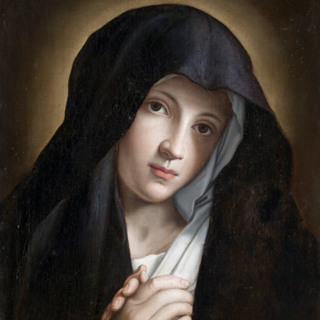
Strengthening Our Spiritual Journey: Prayerful Lessons from the Gospel of Matthew
Strengthening Our Spiritual Journey: Prayerful Lessons from the Gospel of Matthew This Homily reflects on the significance of the Lord’s Prayer (from Matthew 6) . . . . . . in the context of Lent, emphasizing the three key Lenten practices: fasting, prayer, and almsgiving. It highlights Jesus’ teachings on sincere prayer, warning against hypocrisy and meaningless repetition. The Lord’s Prayer The Lord’s Prayer is broken into six petitions—three directed toward God (honoring His name, welcoming His kingdom, and doing His will) and three concerning human needs (daily sustenance, forgiveness, and guidance from temptation). The passage stresses the necessity of aligning one’s will with God’s, seeking daily grace, sharing with those in need, and embracing forgiveness. The Homily also discusses reliance on the Holy Spirit for spiritual strength and deeper prayer life during Lent. Listen to this Meditation Media Listen to: Strengthening Our Spiritual Journey: Prayerful Lessons from the Gospel of Matthew ------------------------------------ Image: Madonna at Prayer: Italian Painter: Giovanni Battista Salvi da Sassoferrato : 1609-1685 The painting now resides in Florence, Italy. ------------------------------------ Gospel Reading Matthew 6: 7-15 First Reading Isaiah 55: 10-11
26 Mar 15min
